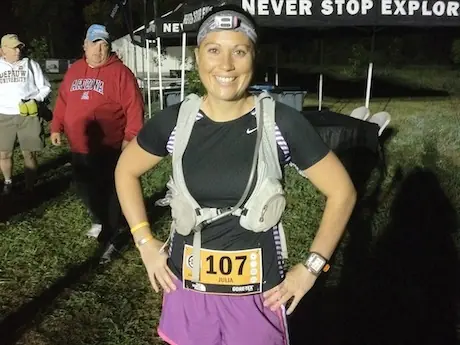
Most new runners are excited to start running and work toward a new fitness goal—maybe that's finishing their first 5K, or running their first marathon. Those "firsts" can be life-changing, empowering and even addictive.
Soon though, every runner starts thinking about their personal best times, wondering if he or she can run a little bit faster. You'll ask yourself questions like, "What if I ran more workouts?" or "I wonder if I pushed myself harder??"
That probably sounds familiar if you recently learned how to start running.
The next logical step is to start doing more structured speed workouts. But where do you begin? Unfortunately, most runners go to their local track and start churning out blistering interval workouts every other day, only to wind up injured a few short weeks later.
A gradual transition to fast workouts is a better strategy, and will ensure that your body adapts to this new stress. Here's how to do it.
Run Fast (Briefly)
Before you start running tough workouts, you should practice running faster for really short periods of time. The best way to start is to incorporate strides a few times a week after your easy runs.
A stride is simply an acceleration about 100 meters long (the straight part of a track). Start at a jog, gradually build to about 95 percent of your maximum speed, hold that for two seconds, then slow down to a stop. One stride should take you about 20 to 25 seconds. Walk for about a minute afterward, and you'll be ready to do another one.
Start with four strides after an easy run twice per week. The beauty of strides is that you can do them almost anywhere: your front yard, sidewalk, a nearby field, the road or even a parking lot.
Keep in mind that while you're running very fast in the middle of a stride, it's only for a few seconds, so they shouldn't be difficult. In fact, strides are meant to be fun!
Strides not only help you improve your running form, but they also make you use more muscle fibers (so you get stronger), and can prevent running overuse injuries. Once you run strides consistently, your other runs will start to feel easier, and you'll be ready for more speed.
More: How to Improve Your Stride
The Art of Mini-Workouts
Once strides are a regular part of your training, you can start doing mini-workouts, or miniature versions of longer workouts you're probably more familiar with.
Any regular workout can be modified and shortened to suit your fitness level. Here are a few examples:
- Instead of 6 x 800 meters (twice around a 400-meter track) at 5K pace, run 5 x 400m (once around the track) at the same pace
- Instead of a 20-minute tempo workout, run 2 x 5 minutes at tempo pace (a tempo is run at a "comfortably hard" pace, or what you could hold for a full hour)
- Instead of 10 x 1-minute hill repeats at 10K pace, run 6 x 30-second hill repeats at 10K pace
- 1
- of
- 2
About the Author

Get ACTIVE on the Go


Couch to 5K®
The best way to get new runners off the couch and across the finish line of their first 5K.
Available for iOS | Android







Discuss This Article